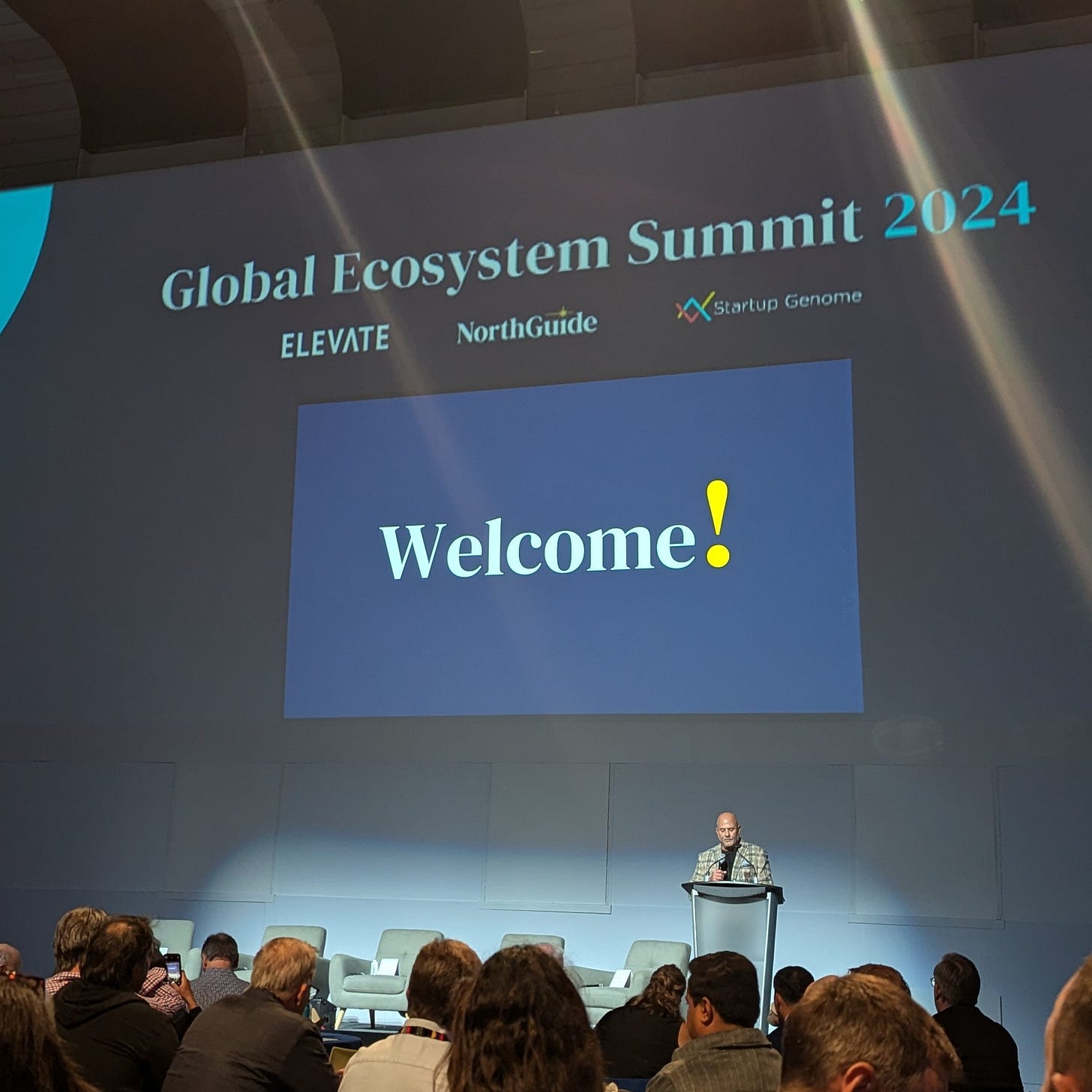Innovation as the Rhetoric of Fear: What are we building innovation ecosystems for?
Some reflections from the Global Ecosystem Summit Yesterday
I was at the Global Ecosystem Summit, organized by NorthGuide and Startup Genome, yesterday. It was a fun afternoon packed with interesting panel discussions, case studies and breakout sessions, not to mention, plenty of good side conversations too. There is one thread from the event that has been going around in my head though since that I want to write about today: what are we aiming for when we build innovation ecosystems?
This was sparked by the first panel of the day on “Innovation Ecosystems: The Model for Collaborative Growth”. The panellists managed to cover a lot of ground in a short amount of time. The difference between the brand and the reputation of an ecosystem, the need for a vision to rally people, the role of big companies and how they plug into innovation activity, and the need to proactively build connective tissue across the different players - there was lots there.
One particular strand of discussion stood out for me though. It covered the need to “win”, how ecosystems are in constant competition with other global ecosystems, and that they face a need to reinvent themselves to stay successful.
This discussion made me think of a quote from Lee Vinsel's and Andrew Russell's book The Innovation Delusion that has stuck in my head since reading a few years back:
Innovation-speak is fundamentally dishonest. While it is often cast in terms of optimism, talking of opportunity and creativity and a boundless future, it is in fact the rhetoric of fear. It plays on our worry that we will be left behind: Our nation will not be able to compete in the global economy; our businesses will be disrupted; our children will fail to find good jobs because they don't know how to code. Andy Grove, the founder of Intel, made this feeling explicit in the title of his 1996 book Only the Paranoid Survive. Innovation-speak is a dialect of perpetual worry.
At least some of the panellists yesterday leaned into that rhetoric of fear in setting their vision for what an ecosystem should be setting out to do. Others took a different tact, emphasizing the roles of humility and generosity in building a successful ecosystem and how relationships in them can, and should, be win-win.
I think this gets at what kind of ecosystem are we looking to build and nurture, and for who. While I don't think that the existence of competition between ecosystems should be discounted entirely, I do think you need to think more holistically about what you are trying to build.
Focusing on “winning”, and beating the competition in a zero-sum game, is one way to go about it. It can create fabulous wealth for some and can lead to innovation. It can also lay the seeds for major issues that can undermine an ecosystem and lead to outcomes that you would not want overall.
You just have to look at the rampant inequality of Silicon Valley to see that. Research from San José State University shows that inequality has risen significantly and is compounding a huge range of social harms in the area. Using the Absolute Gini Index of Income Inequality, where 0 is perfect income equality and 100 is total inequality, Silicon Valley scored 82 this year - more than doubling from 38 in 1990. It isn’t a coincidence that the same research finds increases in homelessness, overdose deaths, chronically absent students, domestic violence and gender wage gaps in Silicon Valley.
Rising inequality cuts off the taps of the very economic growth that you might set out to win. As Heather Boushey, member of the White House Council of Economic Advisors and Chief Economist for Invest in America, wrote in her 2019 book, “economic inequality acts as a bind, thwarting the idealized market processes as it transforms into social and political power. A rising tide can't lift all boats when some can't even get launched and others, pushed off course and deprived of navigation tools, founder on the rocks. Inequality constricts economic growth.”
We need an approach to ecosystem building that isn’t focused on short-term competition but instead on sustainable, long-term prosperity for a region as a whole. That involves not starting not from a place of “perpetual worry” or from pressure to “reinvent” to keep up with the Joneses. Instead, it means understanding local strengths and weaknesses. Where can you take advantage of those strengths and plug them into global value chains? Where can you design specific, targeted, interventions that address weaknesses? How do you nurture shared prosperity? And how do you sustain momentum for the long-term by building institutions and infrastructure that serve the needs of all of those in the community, not just those in the more narrow “ecosystem”?
Those are questions worth asking when setting out to build innovation ecosystems.




